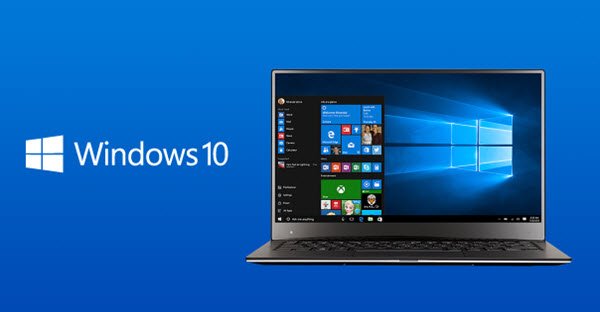Windows 10 on new PC
If you buy a new PC, chances are it will come with the new operating system. If the computer or PC is already running Windows 10, you don’t have to install anything except the programs you will use. You do not need a serial number either, unless you are using an Enterprise or Education edition – in which case, you will have to ask for the serial number by the seller of the new PC. If the computer retailer had installed Windows 10 (in case of assembling PCs manually), you should make sure how the retailer installed Windows 10. You need to ask if he upgraded from Windows 7 or Windows 8.1. If yes, you need not worry as you won’t need the serial key. But if the retailer installed Windows 10 directly – with a fresh license, you will need the key and the retailer should be able to show you where the key is located. The same is the case with computers shipped with Windows 10. In both cases, the serial number is required and you might find the serial number on the back of your computer. If it is not there, you need to ask retailer/seller about the serial key that you might need in future in case you have to reinstall the operating system for some reasons.
Windows 10 on old PCs
There is some story doing rounds on the Internet that you can directly clean install Windows 10 at the very first go and copy some files to make it work. I tried that but it did not activate Windows 10, in my case. If you already have a computer that is running Windows 8.1 or Windows 7, you are eligible for free upgrade, until 1 year from July 29 2015. Though you can perform a clean installation of Windows 10 on these computers, you will have to upgrade in-place first. First you need to upgrade so that your device is registered with Microsoft and then later, you can clean install Windows 10 without worrying about serial key. There are two ways: perform an in-place upgrade using Windows Update or Use a Microsoft Media Creation tool to upgrade the computer. Do not boot from the media to install Windows 10. That will erase all your data and clean install Windows 10. Instead, boot to the current operating system and then install the media. Click on setup.exe if it is not launched automatically. This method is faster to upgrade to Windows 10 and your files and settings are transferred to Windows 10. Once you have done an in-place upgrade using Windows Update or Media Creation Tool, you can then clean install Windows 10 anytime later. You will be asked for key but you simply click SKIP on that dialog. This is because once you upgrade your computer to Windows 10, your computer will be registered with Microsoft along with its configuration. In the future, if you change the configuration, you may or may not face problems.
How changing Computer Configuration affects Windows 11/10 license
Plugging in removable devices will not affect your license. You can use as many plug-and-play devices as you want. If you change Hard Disk or add a new hard disk, you will have to check whether Windows still shows activated. Though the Microsoft Answer Desk said that changing hard disks will not affect your activation, I recommend checking it out. To check Windows Activation status, open Settings > Activation. You can see the status of Activation there. If it says Windows 10 is not activated, click on Activate Now. That should fix the issue. If not, you will have to contact the Microsoft Answer Desk to activate it on phone. The hard disk example is applicable to other hardware parts too. However, if you change the Motherboard, it will be considered a new device. In this case, you will not be able to get the Windows activated automatically. You can contact Microsoft tech support, but it may still be not accepted. You might have to buy a license for activating Windows 10 in case of a motherboard change. In my opinion, the Motherboard ID is associated with your Windows 10 installation and that is why when you make minor hardware changes, your status is not changed. Even for major changes such as adding or replacing Graphics Card, you have the option to activate it by phone (without paying anything) as the device is the same. But if the motherboard is changed, the computer is considered a new device, and hence, it will be necessary to buy a license. The above explains how to clean install Windows 10 on new and old PCs. It explains what happens to Windows 10 license if you change hardware.
To sum up:
If you still have any questions, doubts or if you wish to add anything to the post, please comment below. Now see how to activate Windows license after changing hardware.
